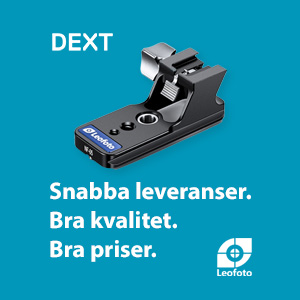joand skrev:
Jag skriver mycket gärna om mina beräkningar på engelska
We have the following data for signal to noise ratio for three different Kodak sensors:
Kaf 18100: Size 10 µm, max well capacity: 100000 electrons, noise: 20 electrons, SNR: 5000
Kaf 39000: Size 6.8 µm, max well capacity: 60000 electrons, noise: 16 electrons, SNR: 3750
Kaf 50100: Size 6 µm, max well capacity: 45000 electrons, noise: 12.5 electrons, SNR: 3600
Now we want to evaluate these sensors in terms of maximum dynamic range in the final image, assuming that we view the images from the three sensors at the same size. We also assume that the sensor sizes are the same.
To do this it is not relevant to compare noise characteristics of individual pixels. We must evaluate characteristics of equal areas of the three sensors. We therefore normalize the figures for a 10x10 um area size.
The signal (number of electrons) is obviously proportional to the sensor area. The noise scales proportionately to the square root of the area. The theory can be found here:
http://theory.uchicago.edu/~ejm/pix/20d/tests/noise/noise-p3.html#pixelsize
The normalized figures for the sensors calculated for a 10x10 µm area are:
Kaf 18100
Same as before
Kaf 39000
Well capacity: 60000 * (10/6.8)**2 = 129757 electrons
Noise: 16 * 10/6.8 = 23.5 electrons
SNR: 129757 / 23.5 = 5520
Kaf 50100
Well capacity: 45000 * (10/6)**2 = 125000 electrons
Noise: 12.5 * 10/6 = 20.8 electrons
SNR: 6010
The conclusion is that the Kaf 50100 has the highest dynamic range in the final image when the images are scaled to the same size. The lower SNR of the individual pixels of the Kaf 50100 are more than compensated for by their larger numbers.








